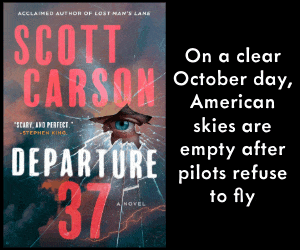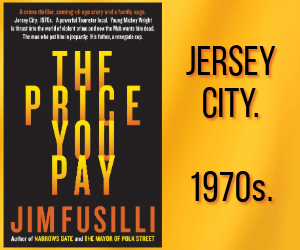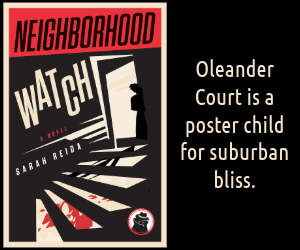
How often does a lover of mystery fiction confront the criticism that her reading tastes are embarrassingly lite? That detective novels are entertaining but escapist, not really “literature”? Five of my favorite crime novelists demonstrate how mystery stories can open windows to history, moral deliberation, and emotional depth as much as any other kind of literature.
Dorothy Sayers: Murder written in a lower key. Sayers’ work may be known these days mainly from two BBC television series featuring her aristocratic detective, Lord Peter Wimsey. Published between 1923 and 1937, her books have passed through the awkward phase of being outdated and now are reservoirs for historical detail. Anyone wishing to absorb the atmosphere of Britain just after the first World War, for example, can learn a lot from The Unpleasantness at the Bellona Club. Although these are classified as “murder mysteries,” in three of the eleven Wimsey books, the reader discovers that there was actually no murder at all. (Spoiler alert: Two of the victims turn out to be suicides (Clouds of Witness, Gaudy Night), and in The Nine Tailors, a terrible death is caused by—sound.) Contemporary novels often present crimes with escalating grisly description. In contrast, this most literary of mystery writers bypassed gruesome flourish.
Philip Kerr: Portrait of a tortured conscience. With Kerr’s long series featuring Berlin ex-cop Bernie Gunther, we move into the troubled years of the second World War. As the Nazis gain power, Bernie increasingly finds himself in situations that require he violate his principles to help someone he loves, or whom he pities, or just to keep himself alive. I know of no better portrayal of a man carrying the burden of conscience. Bernie both recognizes and castigates himself for what war, fascism, and circumstance have prompted him to do—although the reader may be more inclined to forgive him than is Bernie himself. In addition to the moral depth of his main character, Kerr introduces the reader to historical figures whom he has researched meticulously. His novels end with summaries of that research, and the reader realizes that what looked like fiction was terribly close to fact.
Richard Osman: Laughter and tears as the end grows nigh. Osman is a relative newcomer to crime writing, as his debut novel, The Thursday Murder Club, was published only in 2020. He has a special gift of combining laugh-out-loud scenes with heart-twisting poignance—funny and tender at once. I love writers who manage to keep humor in a plot even when it is turning dark. Shadowing the characters—all elderly residents of a retirement community—is constant awareness of the brevity of life, which Osman handles with a delicate touch. Not only does he amuse, he leavens what otherwise might be a heavy journey through plots that have murder at their centers and loss waiting in the wings.
Laurie King: Reviving the past. King’s series featuring Sherlock Holmes and Mary Russell are contemporary publications, but the books take the reader back to a world that Sayers would recognize. (In fact, Lord Peter Wimsey himself makes an appearance in two of her books, but it takes a Sayers fan to recognize his presence.) King situates her plots in far flung places and transports the reader into the historical worlds of Rumania, Morocco, India, Palestine, Japan. One of my favorites takes place on Dartmoor, ominous, looming, and beautiful. Her work exemplifies how setting becomes a character, and sometimes I reread them just to savor the details of places as they were in an irretrievable past.
Carl Hiaasen: Hilarity and seriousness: I end with an author whose gifts are the opposite of where I began. I absolutely revel in the extreme and inventive varieties of revenge that Hiaasen meets out to his lusciously despicable rogues, with their greed, their blinkered obsessions, and their inability to fathom the perspective of anyone but themselves. They have in common their stunningly selfish depredation of the environment, especially the ever-diminishing Florida Everglades. Hiaasen torments them with grisly mutilations, then mends their injuries with ingenious devices—such as a hand bitten off by a barracuda replaced with a weed-whacker. Who but Hiaasen would think of that? And their nemesis, the odorous and mysterious Skink, meets out his own rough justice outside the law in ways that are entirely satisfying, even though they might not survive close moral scrutiny.
So here we have five crime writers who, taken together, illuminate the past, invite moral reflection, arouse laughter and sympathy, take us to places now transformed by modernity, and mount a hilarious and savage defense of the earth’s precarious environment. Their sensibilities are wildly diverse, their points of view collectively inconsistent, their insights all worth savoring.

Carolyn Korsmeyer is a philosopher turned fiction writer who has published three novels and co-edited a collection of short stories. She lives in Buffalo, where half of her dual-timeline mystery, Riddle of Spirit and Bone, takes place. Details of her writing can be found at www.carolynkorsmeyer.com.






Excellent article Carolyn. I love Dorothy Sayer’s books and learned about three authors whose work is new to me. Thanks!